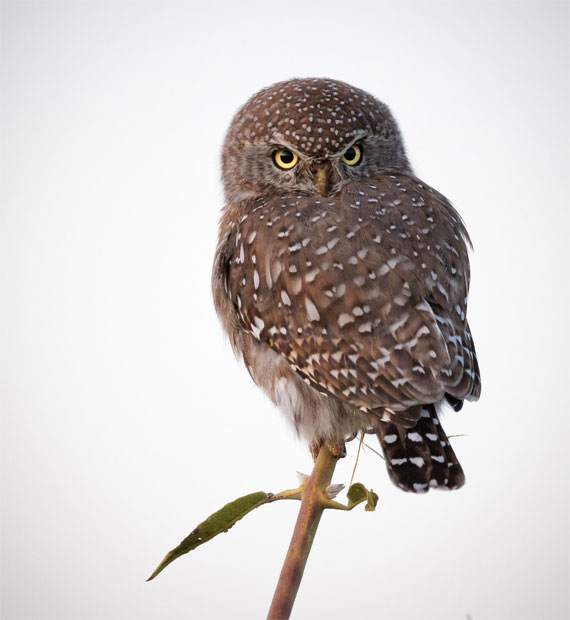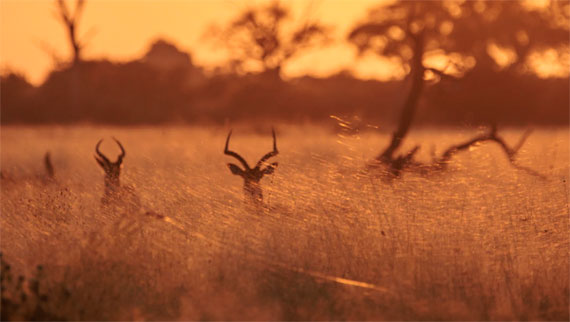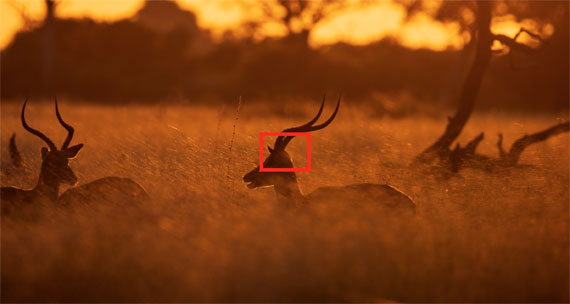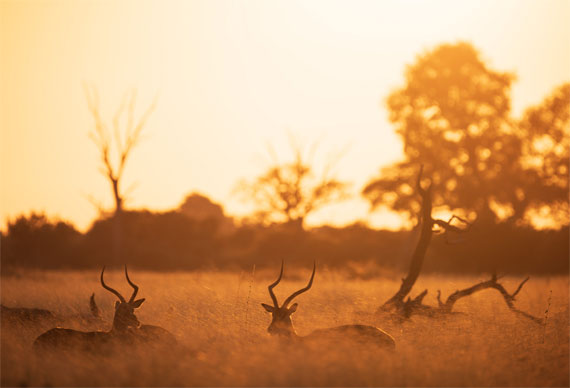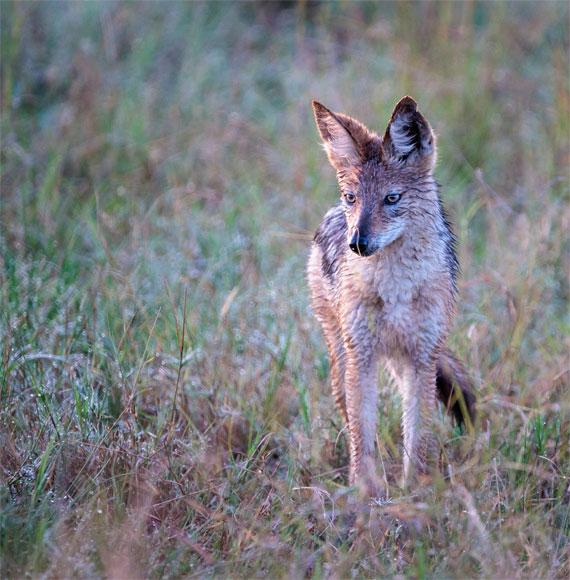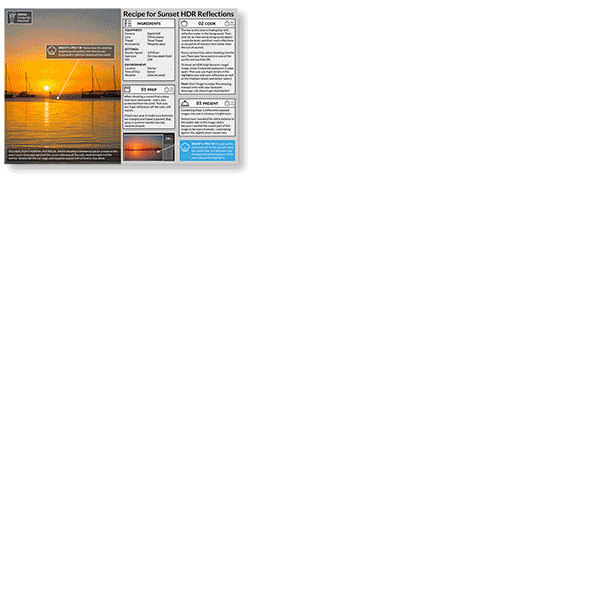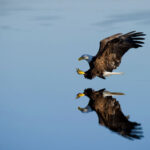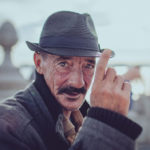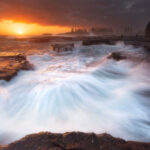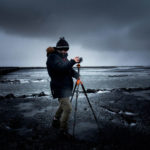This article comes to us from the author of the Sunrise/Sunset Photo Recipe Cards (currently 65% off) if you want to dig deeper for further training.
In this article I wanted to share a few of my favorite recent images and the stories behind them. Why they’re important to me, what I was feeling, thinking and the process behind how they were created.
Plus the throw-away images where I screwed up because we can all learn from our mistakes too. And I’m human – I screw up a lot.
I think the best way of learning is through real-life examples where someone is totally up-front and honest about how these images were created. That’s how I learned and that’s why I’m writing this article – it’s my way of ‘paying it forward‘, helping others as I was helped in the past.
Let’s start with this image I photographed in Botswana a few months ago on my Photo Safari.
Settings: Shutter priority mode 1/500sec using a 600mm lens. Exposure set to -2/3 stop. Aperture and ISO in auto, ISO 160.
What I like about this shot & why it’s important to me:
This image tells a story of Africa, with that beautiful dawn light catching the grasses and silhouetting the impala who have made it through the night without being eaten.
But there’s another story behind this image…
We were lucky enough in Botswana to have our own vehicle for just 4 of us, and a very knowledgeable guide/driver/tracker called KT who was amazing. KT knew so much about nature, the animals and birds and trees but also about their behavior. He had also picked up a few tips about photography and how to position us in the best spot for great images – or so he thought.
You see most photographers will teach you to have your subject front-lit. “Position the sun behind you” I’ve heard hundreds of times.
But for me I love the mystery and mood of images that are back-lit with the sun behind them.
So I let him know. I said “KT, we’re a different group of photographers and we want to shoot into the sun if possible“.
And this was one of those times.
The Back Story:
We’d gotten up before dawn, had our coffee and then climbed into the open safari vehicle all rugged up against that early morning chill. We headed back to where we had spotted a leopard the evening before.
We stopped a few times to look at tracks in the sand and KT spotted some fresh lion tracks. A large male lion with a missing part of his tail he told me – one of the 3 brothers who ruled this area (more about this in another story).
When there is a predator in our vicinity it gets me all worked up (excited) and puts me on high alert scanning the pre-dawn bush for any movement. For me it’s like a hunt – spotting a wild predator in its natural environment is not easy, but when you do it’s so rewarding. It also gets that primal part of my brain fired up – after all there’s a lion close by and humans are prey (we were totally safe in the vehicle by the way).
This is when I feel the most alive – scanning the bush for a wild lion.
I turned around to the others and whispered “Keep your eyes peeled, there’s a BIG lion around here somewhere“.
We turned off the main road and started driving on a narrow dirt track through a wooded area where the vegetation was starting to thin out.
I was on the left side of the vehicle and the early light was on my right. I looked left and noticed a Pearl Spotted Owl perched on a branch. I asked KT to move our vehicle until I had the sky behind our subject to separate it from the darker bushes behind (removing distractions). I just love those eyes!
Settings: Shutter priority mode 1/500sec using a 600mm lens. Exposure set to +1 because of that white sky behind my subject. Aperture and ISO in auto – ISO up to 3200 and aperture f/7.1
Tip from my Sunrise/Sunset Recipe Cards: Remember when you’re photographing a sunrise or sunset to look all around because sometimes the shot you’re after is in the opposite direction of the sun.
We then drove out of the wooded area into a grassy plain where we could see for miles. It was then that I noticed that perfect dawn light illuminating the grasses and dead trees in this wide open savanna – on the right hand side of our vehicle.
Composition is KEY to great sunrise images:
Immediately I started looking for a compelling foreground subject.
A sunrise image is so much more impactful with a foreground subject. You probably already know how important composition is – finding another visual element to add to the scene would give it another dimension – would tell an interesting story.
And I wanted to tell an African story. Possibly adding an interesting tree or some kind of animal. But there was nothing that grabbed me. A few dead trees and some smaller shrubs that were ordinary (boring).
We kept driving, looking to the right into the light to find an interesting subject.
And then I noticed a small group of impala in front of us on the right.
We drove up slowly and came to a stop.
I asked KT to go a little more forward to avoid some of the foreground dead bushes (distractions) until we all had the perfect view.
That’s when I heard the clicking from the cameras, and that’s when I started shooting too.
Once we had that beautiful, warm dawn light plus an interesting composition it was time to start shooting.
Now, it can be challenging when shooting into the sun like this.
Challenges: Focus and Exposure
Firstly it can be difficult to focus when you’re shooting into the sun – the autofocus relies on contrast to lock-on to your subject and with the sun entering your lens sometimes your camera will ‘hunt’ around for your subject… you know that annoying focusing to infinity and then back and forth – hunting.
Throw-Away Shot:
Here’s a shot where the focus was off – looks like my autofocus grabbed something in front of the impala. Spider webs maybe?
So what I did was change my autofocus to the middle focus point and put it right on the edge of my subject where there was the most contrast.
That’s when my autofocus locked on – then I used the focus and recompose technique to re-frame my scene knowing that my subject was in focus before taking the shot.
Once focus was tack-sharp the next challenge for me was exposure. If I let my camera decide to ‘properly expose’ my scene it would have looked something like this.
Compare this image to the first one, notice how ‘washed out’ it is, that’s because my camera took the average exposure for the entire scene and tried to make it properly exposed. This means that my subjects are a lot brighter than I wanted them to be and the sun is over-exposed, losing that beautiful golden light.
So what I teach in my Sunrise/Sunset Recipe Cards is when you’re photographing a silhouette into the sun… under-expose by a single stop (sometimes 2 stops) then your image will come out a lot better.
Once I had my exposure dialed in (-2/3 stop) and my focus spot-on then I needed to think about my other settings like shutter speed etc.
Correct Shutter Speed:
This is where I try to simplify things as much as possible. (Link to Model Photography Article I wrote)
My rule of thumb is this…
When shooting wildlife (action, sports, kids) where your subject has the potential to move and you’re probably using a longer telephoto lens – then shoot in shutter priority mode and use a fast shutter speed that is 2x your focal length.
This means that if you’re shooting with a 200mm lens then double that (2 x 200 = 400) your shutter speed should be around 1/400 sec.
See how that works? 600mm lens would be 1/1200 sec shutter speed.
This will avoid camera shake in most cases plus you’ll have a fast enough shutter speed to freeze your subject too.
Composition: Where the magic is
And the final thing is to think about composition.
That’s why finding these impala in the foreground was so important to make this composition that much better. A rising sun without a compelling foreground object would not tell this African story the way I wanted to.
There are other questions to ask yourself when it comes to composition.
What lens should I shoot with, how much of the scene should I include and how much should I exclude?
How do I feel right now and what story do I want to tell?
These are all creative decisions and this is where I believe the real joy of photography can be found.
But to get to this place you need to have your technical settings all worked out and that’s why I created my Sunrise/Sunset Recipe Cards to quickly and easily help you get into to this creative zone. This is where the magic happens.
Give it a try and notice how it feels.
Just after the impala shot we encountered something else creeping through that long grass.
On the hunt.
A Black Backed Jackal that was soaked from that early morning dew.
Here’s my shot… Did I follow my own shutter speed rule with this shot or did I throw it out the window?
Settings: Shutter priority mode 1/500sec using a 600mm lens. Exposure set to 0 (properly exposed) because we’d lost that golden dawn light and I was not after a silhouette, I wanted to show the jackals eyes.
Stay inspired.
For Further Training:
Currently on sale, The Sunrise/Sunset Recipe Cards, are like having a professional landscape photographer by your side, telling you exactly what to do to get the perfect shot. Proven, step-by-step recipes for 22 different types of sunrise & sunset photo opportunities, so you get the perfect photo every time. Print and carry in your camera bag, or simply save to your phone for quick reference any time.
They contain the distilled secrets of 16 years of sunrise and sunset photography experience, presented in easy-to-follow, quick-glance bullets. Each card is easy to print, laminate, and carry in your camera bag for quick reference in the field. Currently 65% off today if you want to check them out.
Deal ending soon: The Sunrise/Sunset Recipe Cards at 65% Off
Like This Article?
Don't Miss The Next One!
Join over 100,000 photographers of all experience levels who receive our free photography tips and articles to stay current:

